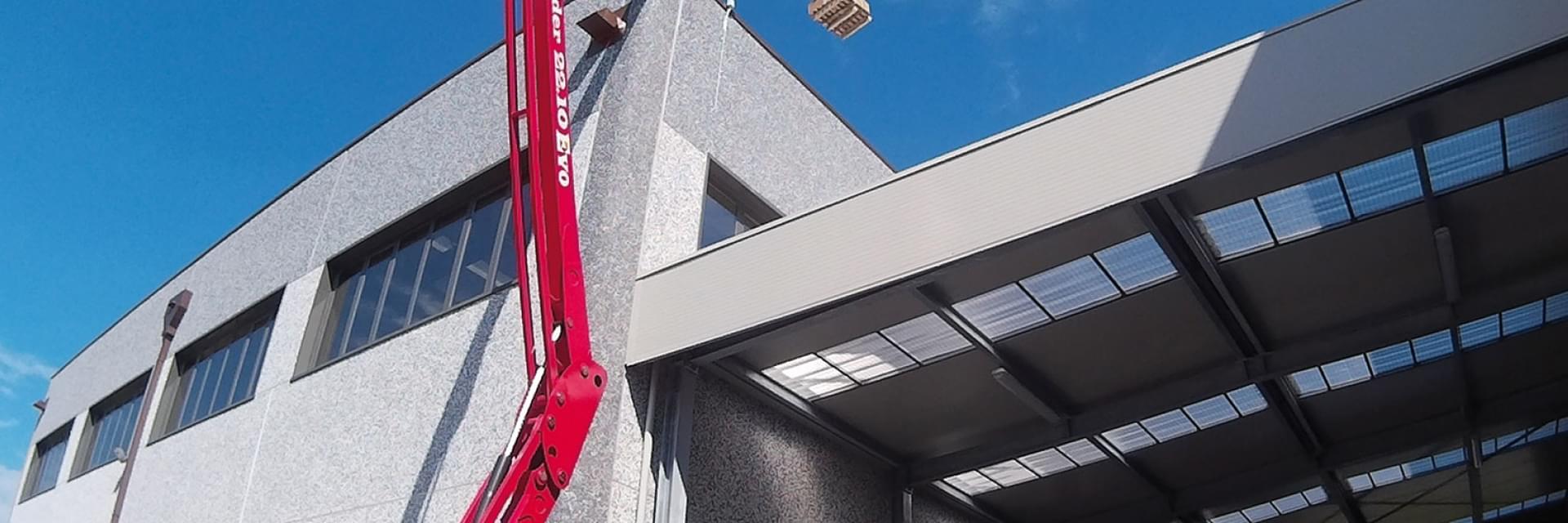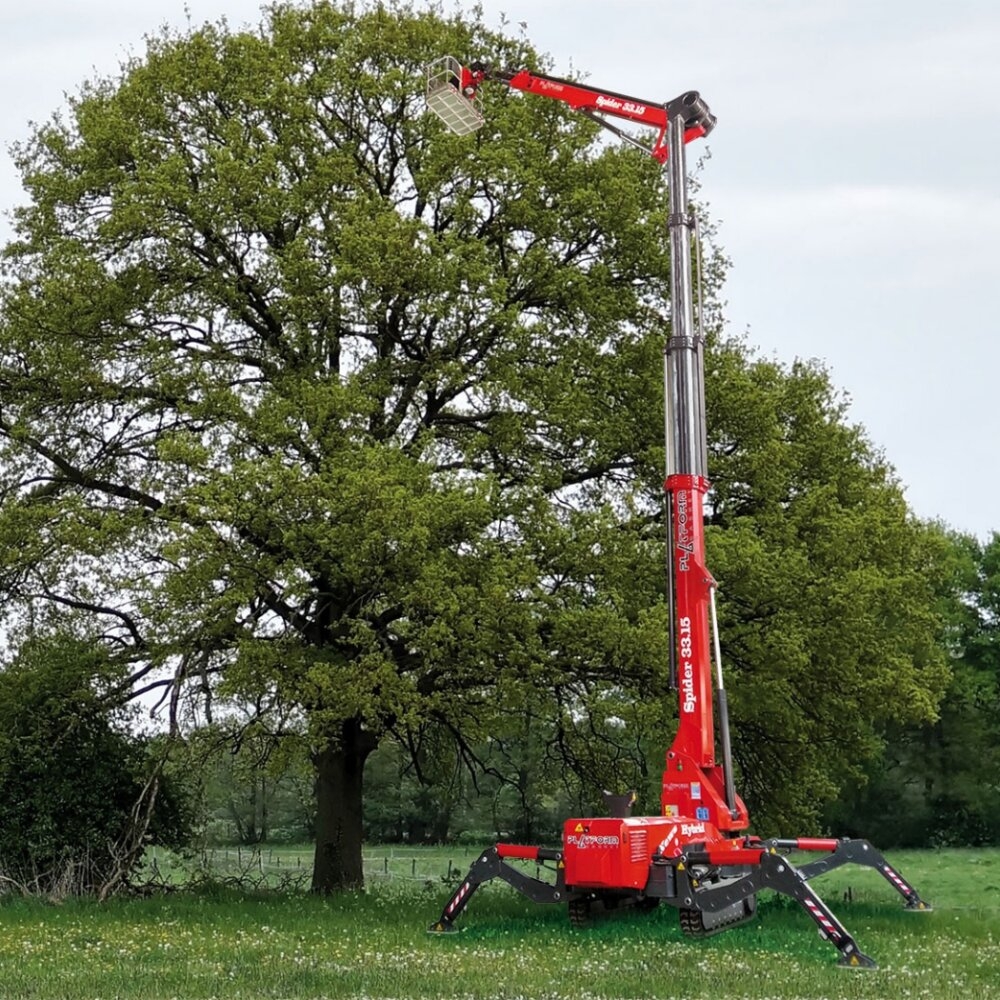
A Comprehensive Guide To Preparing Your Jobsite For Aerial Lift Operation
Aerial lifts are a godsend when it comes to accessing elevated areas. Their in-built extendable arms, stable bases, and baskets with plenty of capacity have made it so much easier to get any vertical job done. You don’t have to resort to rickety ladders or rigid scaffolding and risk your life. You can just hop onto the machine and let it take you to your elevated task’s destination.
But before you deploy an aerial lift of any kind - be it a spider lift, a rail boom lift or even a mini crane - you must fully prepare your jobsite. Plan poorly instead, and you’re likely to end up with damaged equipment, costly delays, compliance violations, and even serious accidents. All of these are entirely avoidable with proper site preparation.
If you don’t know where to begin, our in-depth guide lays the groundwork to use your aerial lift correctly. We’ve worked with professionals from diverse sectors - from contractors to transit authorities and utility providers across Canada, supporting various industrial endeavors with our lifts. So we know exactly what operators need to do to ensure they’ve got the right setting for the safe and efficient use of this machine. Let’s begin!
1. Perform a complete hazard check
This step should be conducted well before any lift type arrives on your site. A detailed hazard assessment of your setting will help you identify potential risks - both for the onsite crew as well as the machine itself. Though compact, aerial lifts are still quite large and need proper space to function well. Hence, knowing the risks is crucial. It’s also the first step in developing mitigation strategies that actually work.
Things you must absolutely assess onsite include:
- Elevated obstructions such as trees, signages, power lines, tunnels and bridges
- Underground hazards such as drainage systems, buried utilities, and unstable subsoil
- Ground stability in the form of slopes, uneven terrains, soft soil or grade variations
- Proximity hazards, which could take the shape of active rail lines, pedestrian zones, road traffic and other structures
- Weather risks including strong winds, lightning, extreme temperatures and snow or ice accumulation
If you’re conducting corridor projects, you should also factor in track access, right-of-way limits and communication channels with railway officials into your hazard assessment plan.
In Canada, projects that require hazard assessment should meet CSA B354 standards, which all our lifts are fully compliant with.
2. Assess ground conditions and load-bearing capacity
Despite their lightweight build, aerial lifts still exert significant ground pressure, which only increases when they’re in a fully loaded or extended state. So, before starting up your spider lift, rail boom lift, or mini lift, perform a brief check to see if the ground can handle it.
You can do this by examining:
- The soil’s compaction level
- Potential underground issues, such as voids or the presence of utilities
- The necessity of outrigger pads or cribbing to effectively manage the load
- Predicted weather conditions and their impact, such as floods or frost
- Surface stability as grounds made of gravel, asphalt, or concrete, proves to be most stable
Stability should be your top priority. If you need a lift that shines in this regard, you can’t go wrong with our spider lift models. They come with adjustable outriggers and offer low ground pressure so you can easily use them on delicate, uneven, or landscaped surfaces.
3. Get a clearance verification
Both underground and overhead utilities run the risk of being unmarked or improperly documented on most job sites. However, an accidental strike on a water, gas, or electrical line can spell doom.
Hence, before your spider lift arrives, you must:
- Use the “Call Before You Dig” program to conduct full utility locates
- Get vertical clearance for overhead lines - especially active ones, and keep in mind the minimum distances as prescribed by provincial regulations
- Acquire utility owner approvals if you happen to work on or near sites with critical infrastructure
If you’re using a rail boom lift, it’s mandatory to stick to railway safety standards, which means getting clearance from signal systems or catenary wires.
4. Demarcate well-defined exclusion zones
No matter the type of aerial lift your task requires, you need to clear out a dedicated work zone for it so it can function optimally without damaging itself or harming bystanders.
You must create:
- A clearly marked exclusion zone, with the help of tools such as traffic cones or makeshift fences
- A plan for traffic control along the site’s roadways or railway tracks
- Controlled access points where only authorized personnel are allowed to use
- A swing radius for aerial lifts and boom reach envelopes
For railway projects, you may have to take extra measures such as establishing a specialized communications channel with train control centers for safe operations. Gaining a Track Occupancy Permit is mandatory as well.
5. Have a site access logistics plan
Certain models of lifts can be quite large. Especially rail boom lifts. This makes navigating them slightly more complex. However, you can simplify this task with coordinated transportation and site access planning. This will help you avert last-minute problems such as low bridges, tight access points or soft staging areas, which all have the potential to throw your schedule off track.
Here’s what to have in your logistics plan:
- Mapped out flatbed or crane delivery routes
- Pre-arranged site access permits, along with gate codes and keys
- A pre-planned lift arrival schedule that takes available dates and optimal weather into account
- A verified staging area to safely unload and assemble the lift
- A pre-approved transport coordination plan across rail lines
For indoor projects or property maintenance tasks, you would be better off with a spider lift. Compact and lightweight, they mostly fit through standard doorways, which makes for easy deployment in tight urban spaces, buildings, and tunnels.
6. Obtain all necessary permits and certifications
The kind of permits and certifications you need to safely operate aerial lifts onsite will be dependent on the type of your jobsite and the jurisdiction it comes under.
Here’s a basic checklist:
- Railway Track Occupancy Permits
- Municipal work permits
- Environmental protection approvals - especially for conservation zones or wetlands
- Ministry of Labour site registrations
- Union/operator certifications to ensure safe rigging and operations
If your team’s technical documentation is in order, you can safely use your spider lifts (or other varieties) on any jobsite across Canada.
7. Have an emergency response plan
Operating an aerial lift comes with a few inherent risks, which require some extra planning, especially in case of emergencies.
Your onsite response plan must include:
- A well-defined rescue plan for basket occupants
- Information concerning the nearest hospitals, along with the medical emergency contacts of everyone onsite
- Fire suppression systems on-site
- Environmental spill kits in case of hydraulic fluid leaks
- Communication protocols for shutdowns due to severe weather
If your task involves working in rail or utility environments, we suggest briefing third-party agencies such as rail control centers or any other first responders on your emergency plans.
8. Hire only certified operators
Not everyone can operate an aerial lift. Hiring an untrained operator can be catastrophic. No amount of sire preparation can compensate for the damage they may cause.
Hence, you must ensure that every aerial lift operator you hire has a recent and valid training certificate in compliance with:
- CSA B354 operator standards
- Provincial occupational health and safety regulations
- Training modules as specified by the manufacturer
- Fall protection certification
Make sure your operators are certified by a reputable and widely accredited training institute.
9. Consider the weather
You can’t “prep” the weather, but you can control the season or weather condition you choose to operate your aerial lift in. Safe usage of aerial lifts is difficult during strong winds, heavy snowfall, torrential rain, and cold temperatures.
Make these special considerations:
- De-ice tracks, baskets, and boom arms of your lift before operation
- When using diesel or electric units, cold-start the operation
- Adjust wind speed thresholds
- Place extra padding on the outriggers when using them on frozen ground
- Make arrangements to combat operator visibility issues such as glare, fog, etc.
Adding our weather-resilient spider lifts to your fleet might be a good idea in this regard. Our insulated models can be particularly handy during cold-weather utility tasks.
10. Inspect your equipment pre-shift
A crucial part of the aerial lift preparation process, make sure you check it for the following before use:
- The condition of the undercarriage - tracked or tire-based
- Hydraulic fluid levels and signs of leaks
- Battery charge levels
- Functionality of the control panel - both for ground operations and basket control
- Emergency stop functionality
- Outrigger deployment tests
If you find parts that need repair or replacement, consider fixing them before use to prevent any accidents.
Conclusion
If there’s one way to guarantee jobsite productivity, it’s preparation. Not only do you increase efficiency and minimize delays, but you also ensure all tasks are completed within budget and in the safest manner. All that’s left is getting the right aerial lift, which you can at Platform Basket Canada. Our range of sturdy equipment has been designed to support contractors, arborists, transit authorities, and other industries across Canada. Contact us to discover the perfect lift that elevates your project!



